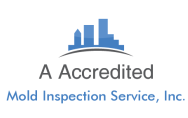For a moisture testing service which is better? Testing moisture content percent with a moisture meter, or testing water activity levels (aw) during a mold inspection?
Water activity level measures are more accurate and are great for use in the food industry but moisture content readings are much more practical during mold testing and moisture testing.
What is water activity level (aw)?
Water in a substance that is not bound to the substance molecules is available water and can support the growth of mold. The term water activity (aw) refers to this unbound or available water.
Water that is chemically bound to molecules in a substance is not available for mold.
Another way to look at it is the water activity (aw) of a substance is the ratio between the vapor pressure of the substance itself, when in a completely undisturbed balance with the surrounding air media, and the vapor pressure of distilled water under identical conditions.
In the world of mold inspection and moisture testing service methods I do not think many inspectors ever uses or even knows about such scientific measurements with such sophisticated instruments. Though it is a better measurement when you want to know if a substance contains enough water in the right molecular state to support growth, it is seldom used or widely known about outside of a food lab setting.
The main advantage of testing moisture content % is that a moisture meter can test many spots in real time during an inspection,testing aw levels may involve chipping a away at building materials and putting them in a chamber, doing so will not allow one to test many locations without damaging many building surfaces and incurring costly testing fees. This will also distract the inspector from doing more important investigations like looking and smelling ect.
In a in crawl space where you are covered in dirt and surrounded by musty smells and you want to know if the wood above you is wet enough to support mold you just use a moisture meter.
Moisture meters and humidity meters do not always give results accurate and precise to the nearest % so moisture testing services debating over exact moisture levels that cause mold growth is fruitless.
http://www.masongrant.com/pdf_2008/Field_Moisture_Measurement.pdf
And levels will likely be much different from day to day and from spot to spot.
16% moisture in wood to support mold is not an exact number that is always right, some mold may grow at lower levels but it is one of those industry wide recognized levels. This is not an exact scientific measurement but it is exact enough for mold inspectors.
A moisture content of 16% is well-recognized as the limit for surface mold.
